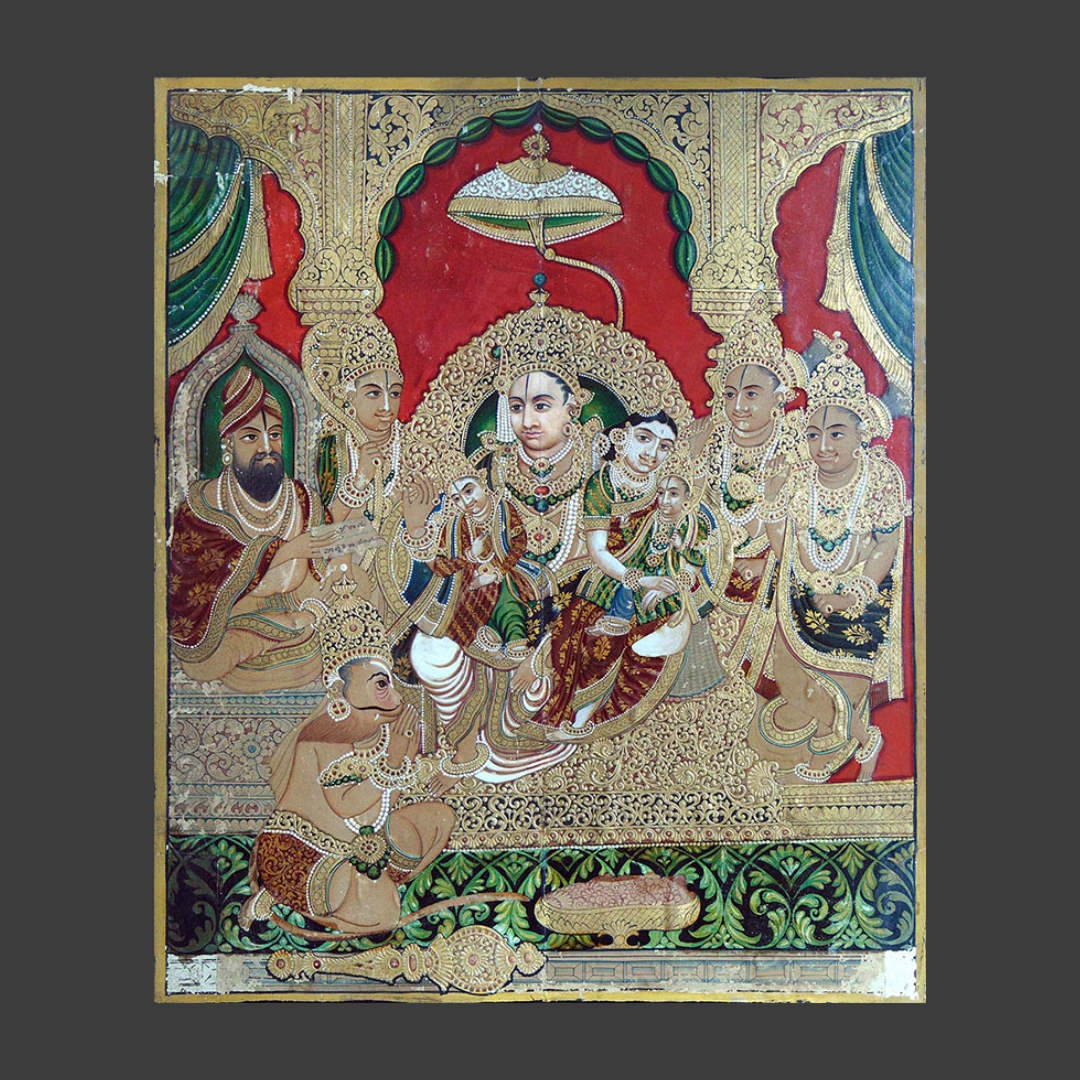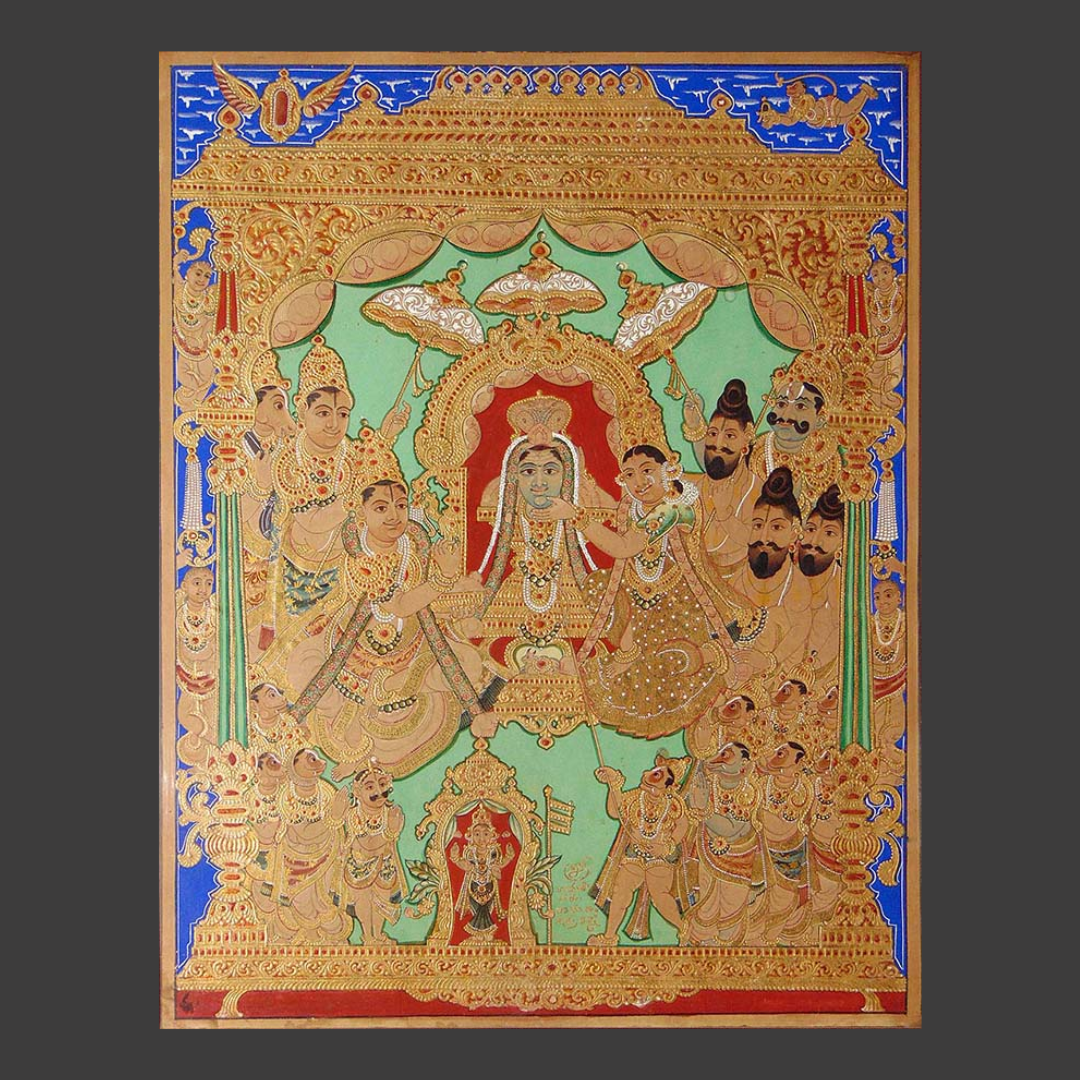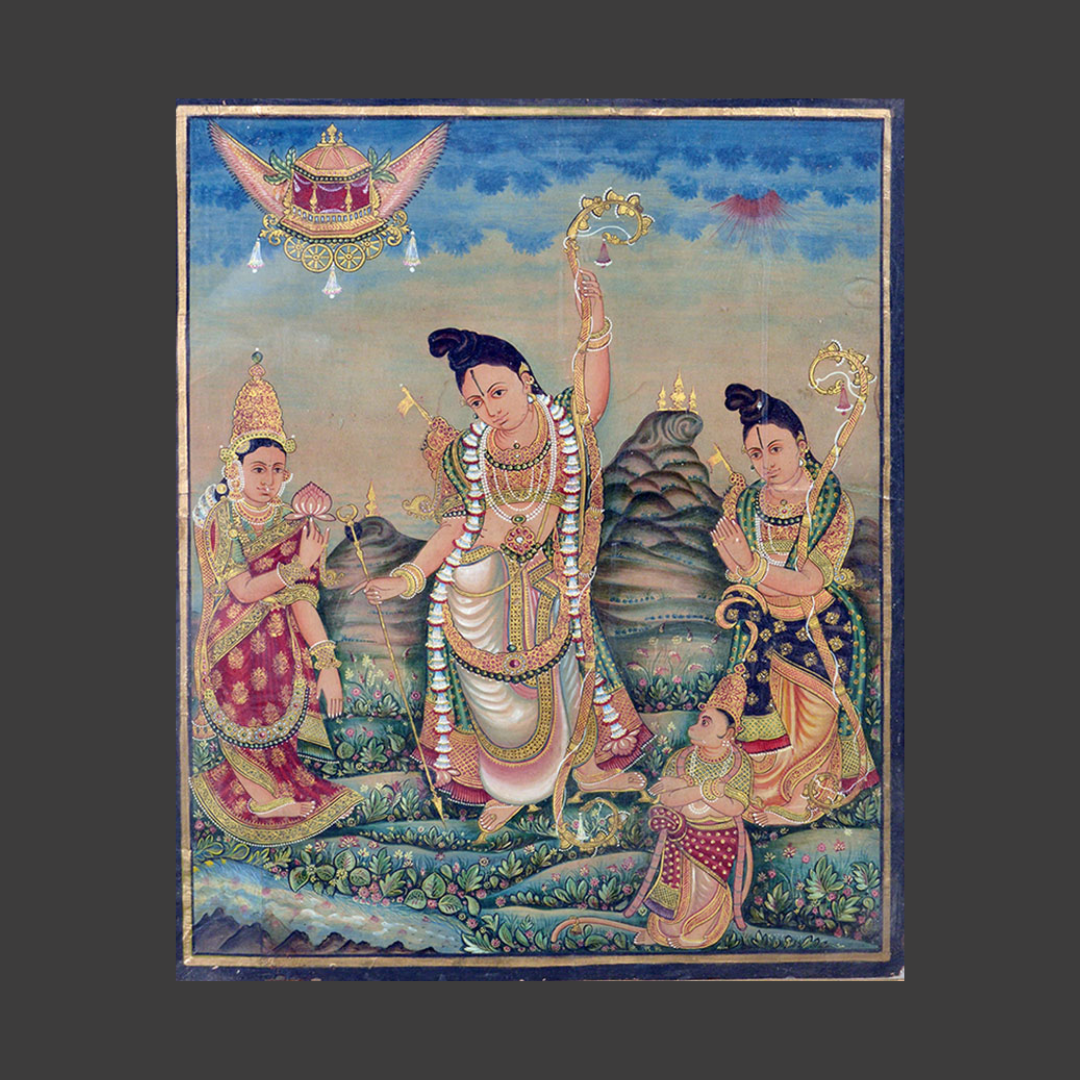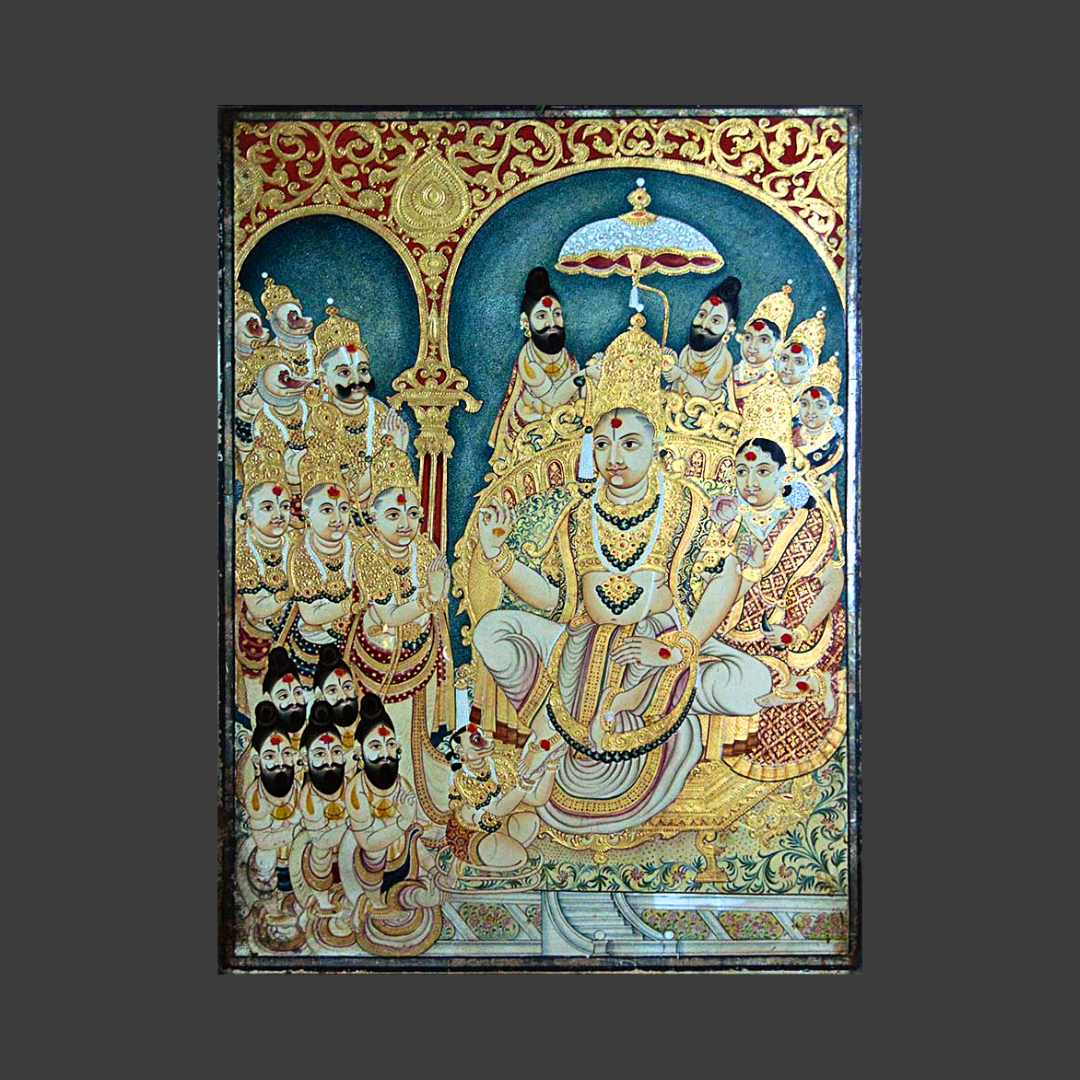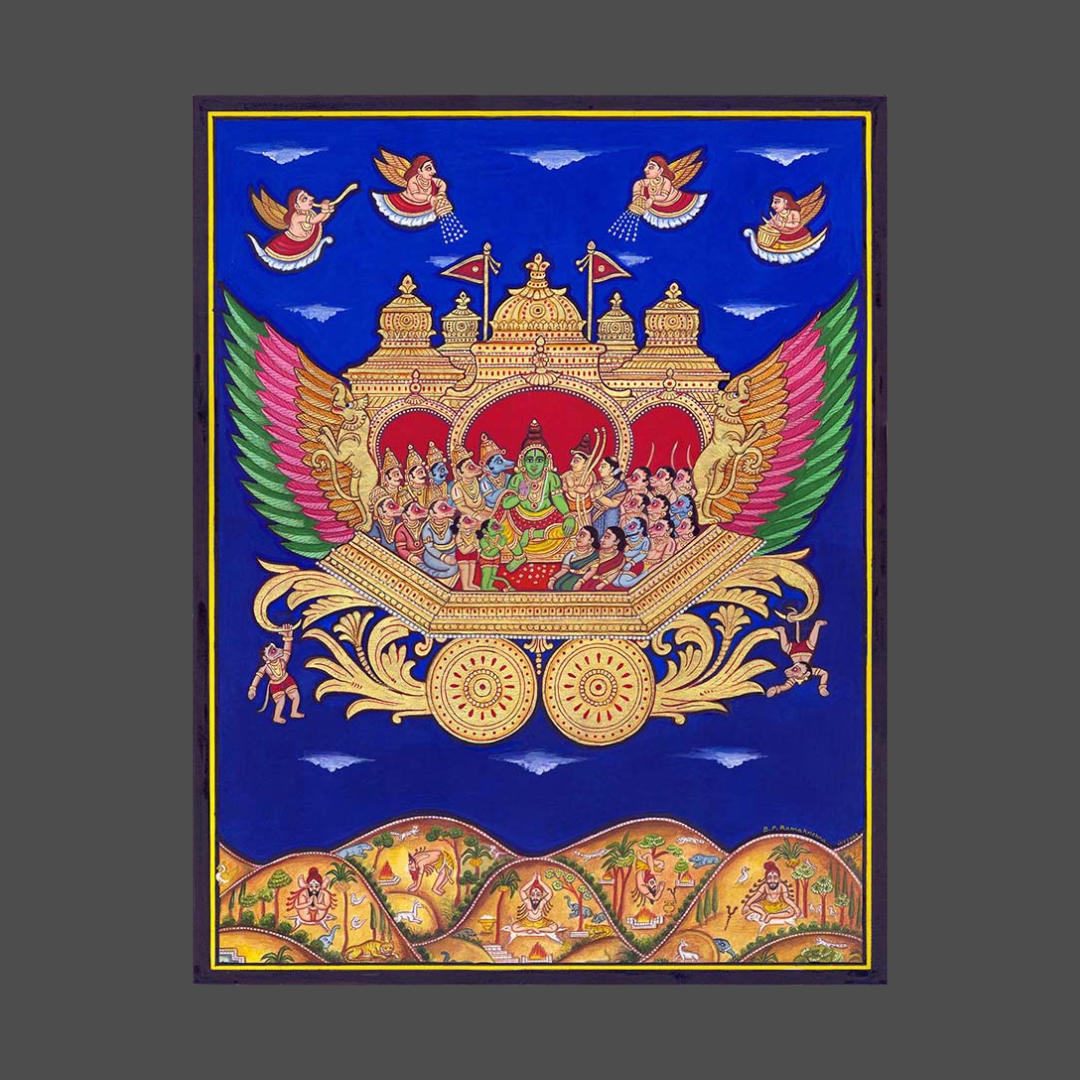
Map Loading...
Gesso painting of Mysore
Karnataka
Mysore painting ಮೈಸೂರು ಗೆಸ್ಸೋ ಚಿತ್ರವು), a traditional Indian craft rooted in Karnataka’s royal heritage. Mysore painting emerges as a distinct style from the city of Mysore and its neighboring regions, characterized by its intricate gesso work, subtle color palette, and religious iconography. This art form is recognized for its low-relief gold embellishments and delicate depiction of Hindu deities, mythological scenes, and courtly life, making it a valued collectible and a living testament to South Indian artistic traditions.
After the Vijayanagara Empire fell in 1565 AD, many painters lost royal support and sought new patrons. Raja Wodeyar I of Mysore (1578–1617 AD) revived the tradition by settling Vijayanagara artists in Srirangapattana. With continued Mysore court patronage, the Mysore school developed its own style based on Vijayanagara roots. The Chitrakara community and other artisans preserved and passed down the craft through generations.
The process of creating a Mysore painting begins with preparing a base—usually cloth pasted onto a wooden board and coated with a paste of chalk or white lead mixed with natural adhesives. Artists sketch the composition using charcoal or red ochre. The signature gesso technique involves applying a paste of white lead, gum, and sometimes yellow ochre in intricate patterns to highlight jewellery, costumes, and architectural elements. Once the gesso dries to a low relief, pure gold leaf is applied and burnished for a luminous effect. The remaining areas are painted with natural pigments derived from minerals and plants, such as indigo, turmeric, and pomegranate, resulting in soft reds, greens, yellows, and blues. The final painting is carefully polished to achieve its characteristic sheen.
What distinguishes Mysore painting is its restrained use of gold in low relief, in contrast to the heavier, high-relief embellishments of Tanjore paintings. The style borrows elements from Kerala murals, including linear composition and the use of watercolors, resulting in a refined interplay of light, color, and texture. Courtly costumes and ornamentation depicted in the paintings reflect the prevailing styles of the Mysore court, while the architectural backgrounds often mirror features of the Mysore palace.
Material
Charcoal, Cloth, Natural colours on cloth, Paper & Gold foil
Technique
Painting
Showcase
